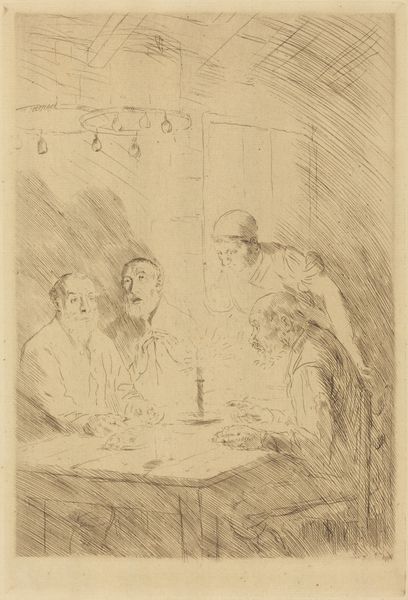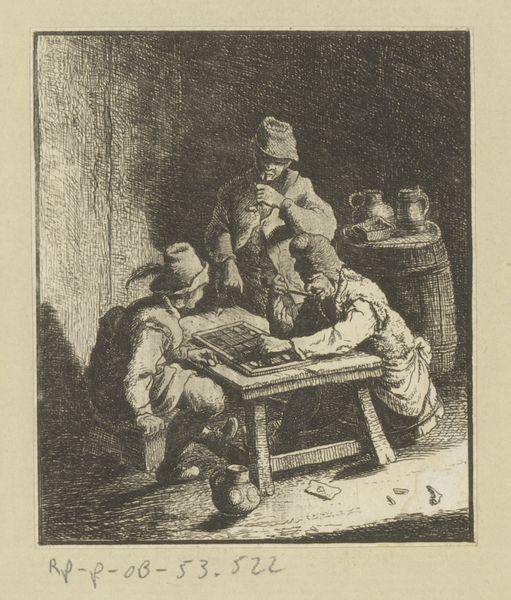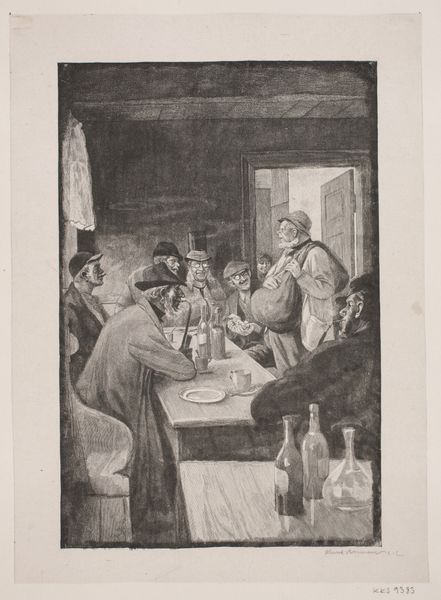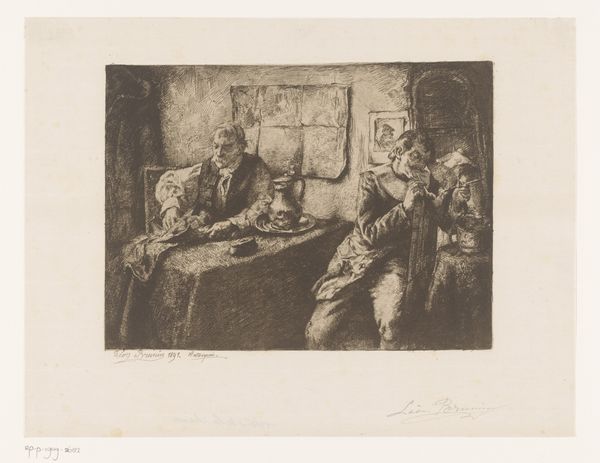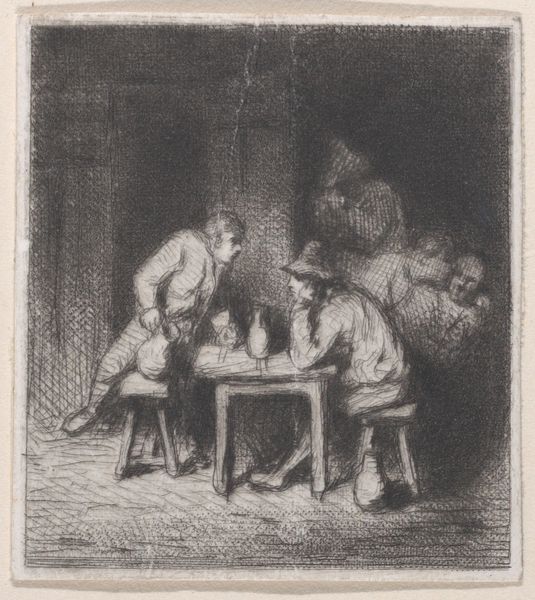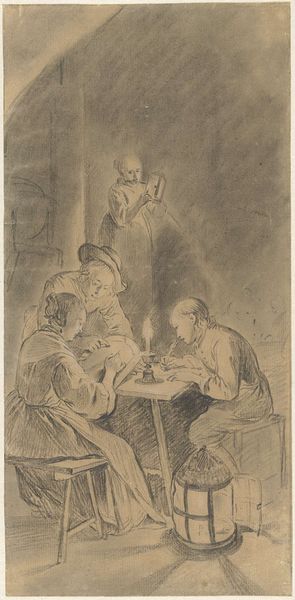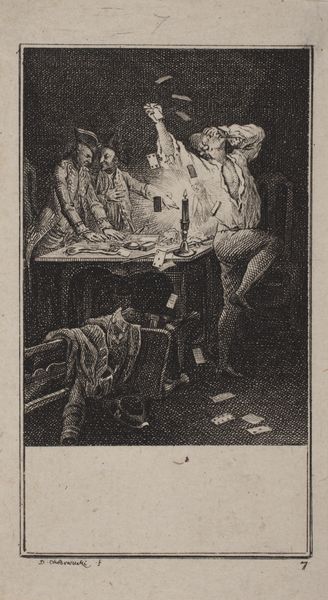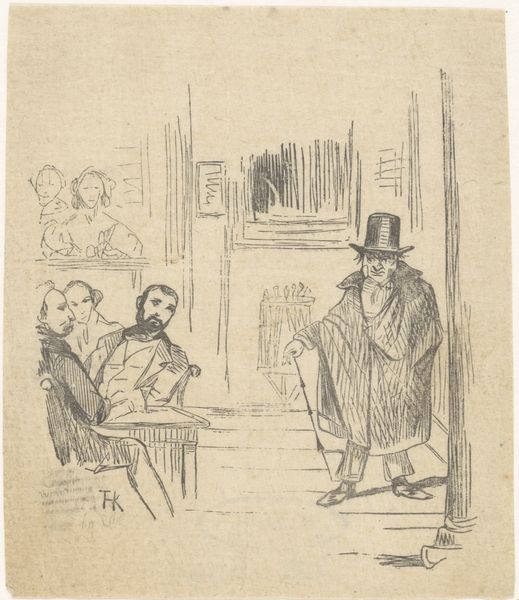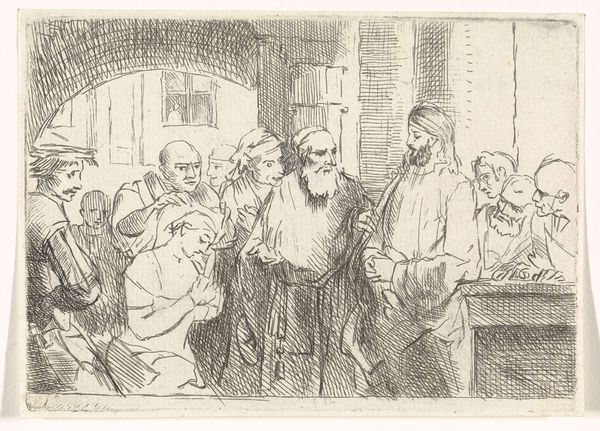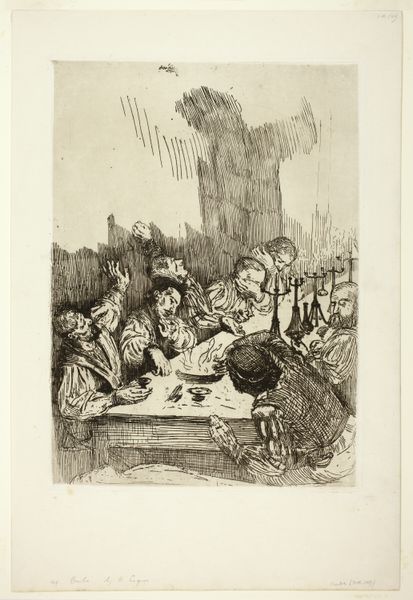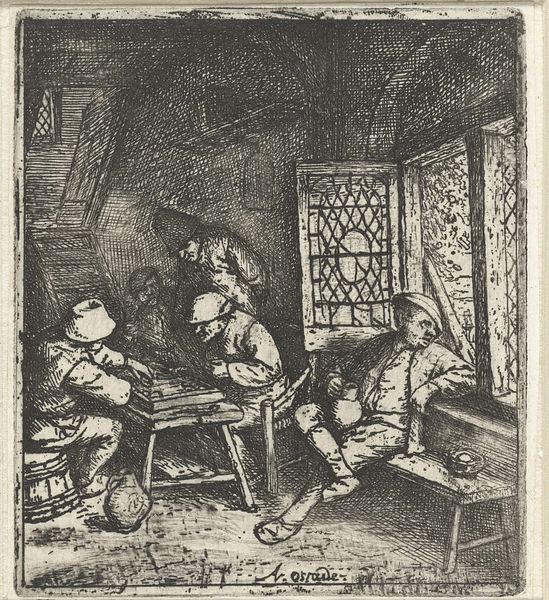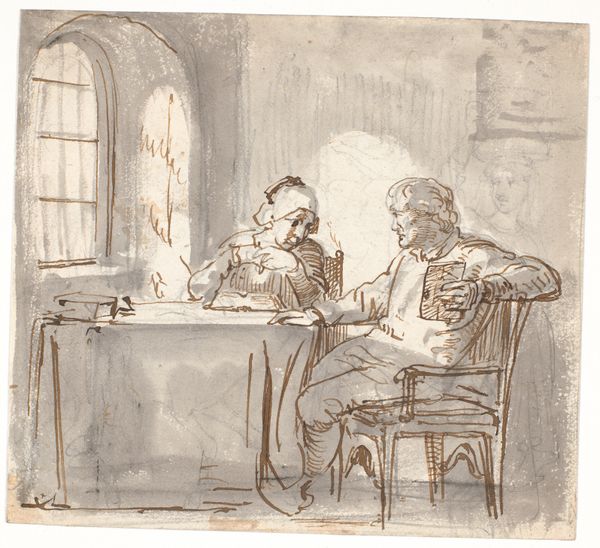
drawing, print, etching, intaglio
#
pencil drawn
#
drawing
# print
#
etching
#
intaglio
#
pencil sketch
#
vanitas
#
pencil drawing
#
group-portraits
#
genre-painting
#
realism
#
monochrome
Copyright: National Gallery of Art: CC0 1.0
Editor: This is Alphonse Legros' "Supper of the Poor," made with etching, a type of printmaking. The scene is so stark, almost severe, with just a few figures illuminated by candlelight. What social commentary do you think Legros is making here? Curator: It's not just a scene, but a statement. Consider the period – Realism was burgeoning, pushing back against romantic idealization. Legros isn't simply depicting poverty; he's asking us to confront it directly. What power dynamics do you observe in their expressions, in the distribution of light and shadow? Editor: I notice the single woman looking on seems younger than the others. It makes me think about vulnerability and social roles, perhaps? Curator: Exactly! Her gaze, her posture, they all suggest a specific intersectional vulnerability – youth, gender, poverty. How might feminist theory help us unpack the relationships of care, labor, and perhaps even exploitation, represented within this intimate scene? Think about who is seen and unseen, heard and unheard, both within the image and in the larger society it reflects. Editor: So, it's more than just poverty; it’s about who experiences it, and how society structures those experiences. Curator: Precisely. Legros' choice of intaglio allows for those incredibly fine lines, creating a sense of fragility, of lives lived on the edge. By using this technique, he amplifies the harsh realities he wants to convey about the lives of the people. It makes you wonder how effective art can be as a social critique? Editor: I definitely see how examining the historical context reveals so many hidden layers within this seemingly simple composition. Curator: And how understanding the social context can inform and empower our understanding of what we see, so as to provoke more social action, right? It's about looking beyond the aesthetic, towards the socio-political fabric woven into the artwork.
Comments
No comments
Be the first to comment and join the conversation on the ultimate creative platform.
